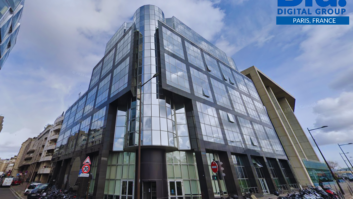It goes without saying that 2020 was a shocking year for global industries across all sectors. Before Covid-19 struck in early 2020, the media industry was already making moves towards remote working practices. There had been some hesitancy in transitioning to digital tools and software services but as countries around the world shut down and governments issued ‘work from home’ orders, this transition happened almost overnight. As a result, remote production and virtualisation tools have given a lifeline to the entire broadcast and media community providing the capability to produce programmes, and manage and deliver media remotely, ensuring the safety of colleagues, customers and partners during these unprecedented times.
This is backed up by the IABM’s special report in September 2020 Charting the uncharted – Plotting the course for the Media Technology Industry, which advises to “prepare for a brave new digital world”. The report highlights that lockdowns have driven digital services consumption worldwide while putting the industry’s traditional revenue sources under pressure. This is a key factor as it’s making media companies accelerate their move to direct-to-consumer business models. The report also shows remote production as the fastest growing technology when creating and producing content. These solutions have proven to work incredibly well and they are here to stay.
Moving forward with these new working methods, media companies are transitioning away from hardware to new software-as-a-service (SaaS) technology. SaaS provides a pay-per-use model, which is a major benefit for broadcasters who can scale operations up and down in relation to busy periods, this is particularly relevant for the sports market. The IABM’s report, highlights that this move to direct-to-consumer models is driving a change in mindsets. Media companies are “focusing on business and revenue models rather than on technology, which is seen as an enabler”. It’s radically changing technology investment, with media companies investing more in developing platforms in-house. It’s also driving a major generation shift with new digitally native people, who are accustomed to doing things more quickly, virtually and ethically. All this is leading to a re-invention of the role of suppliers from vendors to providers.
Enter iPaaS
For the media and entertainment industry Integration Platform-as-a-Service (iPaaS) has an important role to play. iPaaS is a suite of cloud services enabling development, execution and governance of integrations and connecting any combination of on-premises and cloud-based processes, services, applications and data within individual or across multiple organisations. A media-centric iPaaS based solution is designed to support projects requiring high availability/disaster recovery (HA/DR), security, service-level agreements (SLAs) and technical support from the provider.
A Mordor Intelligence Report Cloud TV Market – Growth, Trends and Forecast (2020 – 2025) shows Infrastructure-as-a-service (IaaS) and Platform-as-a-Service (PaaS) as the fastest growing segments of the broader cloud market. The report states that cloud services and IaaS, in particular, are fully embraced by domestic enterprise users; and that the local IaaS market is the first choice of small and medium enterprises to construct IT resources in the fields of gaming, video, and mobile internet.
Adding applications to an organisation requires an open standardised approach. Media-centric iPaaS based solutions are ideal for comprehensively standardising media processing and transactional metadata movements between applications. Additionally, iPaaS provides out-of-the-box critical integration functionality.
It also provides flexibility as applications are integrated with the platform, which can consistently implement media and metadata migration processes between any set of applications. Thus, when updating an application, only its integration with the platform requires updating. iPaaS products provide a much more streamlined solution by standardising how applications are connected in an organisation and how manual processes are automated across applications – even as applications are constantly swapped and added.
We can see that iPaaS is a major component for the industry going forward. A media-centric iPaaS based solution supports an opex model with easy-to-use integration and configurability tools that allow users to change processes and applications quickly and smoothly and be able to adapt and grow as their needs and technologies change in the future. It will be interesting to see how ‘as-a-service’ models develop and how the industry moves forward as we settle into this ‘new normal’ paradigm.
Deploying a Hybrid Cloud Infrastructure
Hybrid cloud is an important part of the remote working mix. Hybrid cloud architecture allows media companies to meet business objectives quickly while maintaining full control of media archives and costs. As part of its September 2020 report, the IABM published a Cloud Adoption Tracker, which showed that 50 per cent of companies have already adopted cloud services, 51 per cent of companies want to apply cloud to manage workflows and 43 per cent of companies prefer hybrid cloud deployments.
Because of the continuing increase in UHD content and thereby high-bandwidth demands, it’s essential that media companies deploy a hybrid cloud infrastructure that follows the basic principle of ‘bringing applications to media’, and not ‘media to applications’.
By using computing storage and services architecture that combine the privacy and security of a private cloud with the scalability of a public cloud, users benefit from orchestration among various platforms and multiple sites. They can store sensitive data and high-value, high-resolution content on-premise inside a secure IT environment that’s not accessible outside their facility, fully under the control of their IT team. In addition, some operations need continuous access to media, which needs to be executed on-premise. Less critical operations including burst or peak demands in business operations can be quickly deployed and run in the cloud for enhanced agility. This means that media companies pay only for the period of time required by the additional business operations. High cost services such as storage for archiving can benefit from the ability to tailor the operations to the business cost criteria. Tedial’s Hybrid Cloud architecture does all this and more and in September 2020 we were delighted to announce that our technology won a TVBEurope Best of Show Award.
We’re all learning from living through a pandemic, which has accelerated fundamental changes that were already slowly underway and despite the difficulties that the industry has endured, we’ve still got plenty to be grateful for. Here at Tedial, where innovation and product leadership have built our reputation for the past 20 years, we’re anticipating this year with great optimism as the lessons of 2020 continue to drive the technical evolution of 2021 – and we can’t wait to share our business and technology transitions over the coming months. Watch this space!






